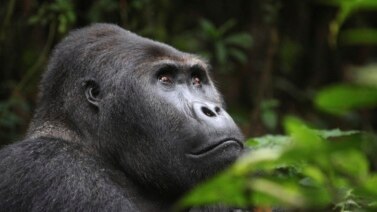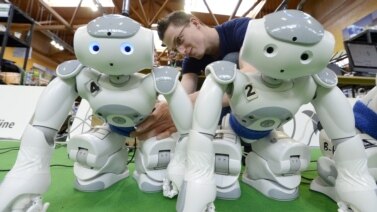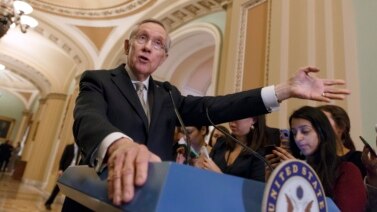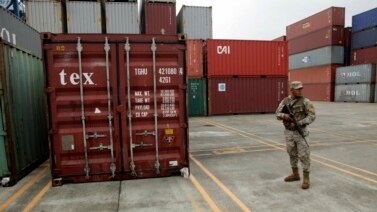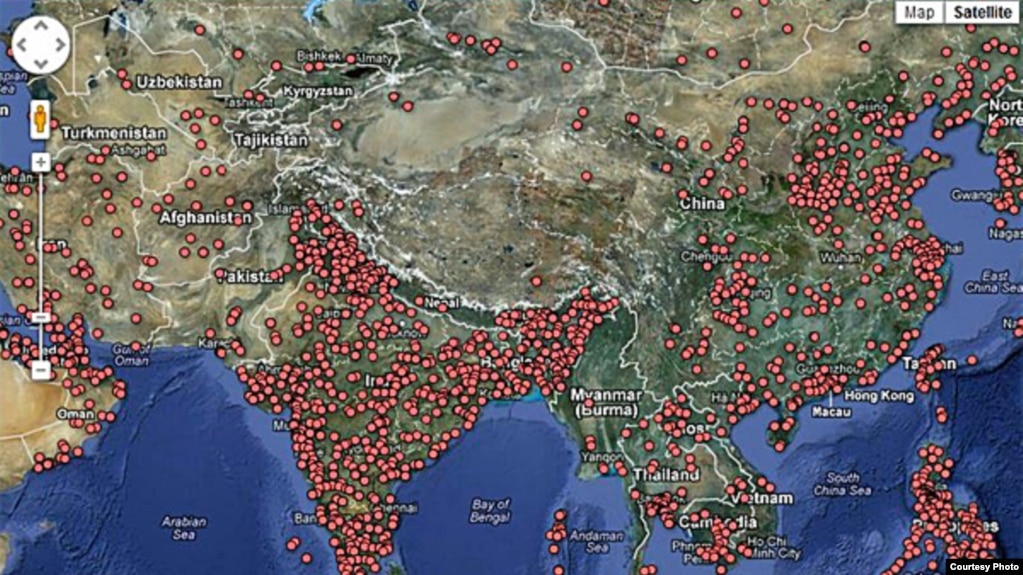
Welcome to As It Is, the daily magazine show from VOA Learning English.
(MUSIC)
I’m Mario Ritter.
A music video shot in space? That is now a reality. Today, we hear how Skylab led the way for astronauts living in a weightless environment for long periods.
But first, an American researcher is making an appeal to what he calls citizen scientists. Find out how anyone can help map carbon dioxide released in the atmosphere.
Scientists are seeking more information about gasses that traps heat in the atmosphere. Now, American researchers have launched a project in an effort to better understand how one such gas, carbon dioxide, affects climate change. The project will depend on citizen scientists providing information about all of the world’s power plants. June Simms has the story.
Kevin Gurney is an atmospheric scientist at Arizona State University. He is making a map of the world’s carbon dioxide emissions. Power plants are major producers of those gases. They are believed to cause more than 40 percent of carbon dioxide emissions.
Kevin Gurney says there is good information about emissions in the United States, Canada, India and the European Union. But, he says, estimates for the rest of the world are not complete.
“And if fact, it’s so inaccurate that is really insufficient for the type of science that we’re trying to do.”
Kevin Gurney’s project is called Ventus, a word that means ‘wind’ in Latin. He has set up a website where people around the world can provide information about power stations.
“We need two pieces of information. We need the amount of electricity generated at a power plant, which if you live near one or you know somebody that works there, that information is pretty readily available. Most people will know that. We also just need to know the primary fuel. And with those two things we can actually create a better estimate of CO2 emissions than we do right now.”
The Ventus project database currently lists about 25,000 power plants. Mr. Gurney says there are plants missing from the list. He is asking others to provide the missing information. One of the project’s goals is to create a regularly updated map of carbon dioxide emissions everywhere in the world.
“We will produce the emissions on a map, every hour, every year. We will use that within models of climate change to more accurately characterize emissions, greenhouse gas concentration and the projections of those concentrations into the future.”
The first version of the map will be available on the Ventus website within the next several months. The map will be amended as new information is received. Kevin Gurney hopes it will help better inform policy makers and the public. He also expects citizens engaged with the project to become activists for change.
The Arizona researcher wants citizen scientists to register on the website. The person who provides the most usable information will be named Supreme Power Plant Emissions Guru. That honor comes with an award and recognition as a co-author on a scientific paper about the project.
I’m June Simms.
Skylab’s Legacy
For more than 40 years, scientists have sought to learn how well human beings can adapt to long periods in space. The International Space Station continues to provide valuable knowledge about spaceflight. But an earlier space station, Skylab, helped make the current space project possible. Kelly Jean Kelly tell us the story.
(MUSIC)
The music you are hearing came from space -- the International Space Station to be exact.

Canadian astronaut Chris Hadfield's music video has become extremely popular. The astronaut plays his own version of David Bowie's song "Space Oddity.” He performed while floating weightlessly, with images of planet earth and space appearing in the window behind him.
Chris Hadfield recently returned home after nearly five months on the space station. For him, the long flight produced a hit video on YouTube and no major physical problems. But 40 years ago, scientists did not know how humans would react to long-term spaceflight.
To find out, NASA, the American space agency, launched Skylab in May 1973. Over nearly a year, three teams of astronauts visited Skylab for stays of between 28 to 84 days. They learned how people react to extended periods in space.
Gerald Carr commanded Skylab 4. He spoke at a NASA event marking the 40th anniversary of Skylab’s launch. He told VOA that the loss of the body’s muscle mass was a main concern.
"What we learned was that simple exercise takes care of the problem, and there's no reason why a person can't stay in a weightless environment for a long, long time."
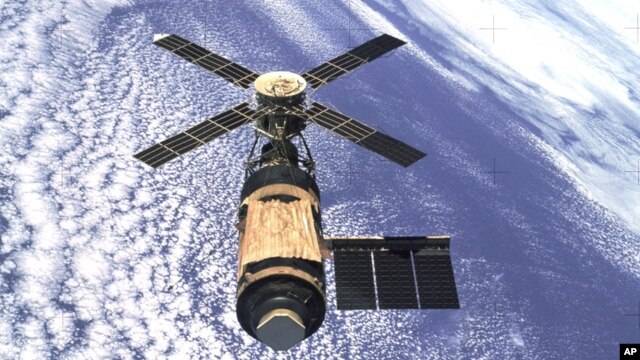
Astronauts on Skylab used exercise equipment to stay strong. The astronauts spent their workdays carrying out experiments, including biomedical research. The early space station also served as an observatory for the sun and the earth.
Owen Garriott was the science pilot of Skylab 3. He is happy with what NASA did with the early space station.
"Forty years out, I think we're still impressed with the amount of work that was accomplished and the foresight of the investigators in planning the experiments."
Marshall Porterfield is the director of NASA's Space Life and Physical Sciences Division. He says the Skylab astronauts' understanding of their own ability to deal with long-term spaceflight continues to help current astronauts.
"Now we've built on that, and what they found in terms of bone and muscle health changes that occur in space, and those are still significant areas in our research portfolio now."
NASA says the next step for life away from Earth is a year-long space station mission, set for 2015. I’m Kelly Jean Kelly.
(MUSIC)
Finally, May 29 is the birthdate of American revolutionary leader Patrick Henry. He was born in 1736. Henry is famous for making a speech in support of ending British colonial rule. He said the words, “Give me liberty, or give me death.”
(MUSIC)
Thank you for listening today. You can read and download our programs at learningenglish.voanews.com. And join us at the beginning of the hour Universal Time for the latest news.
Rosanne Skirble and Suzanne Presto contributed to this program.
